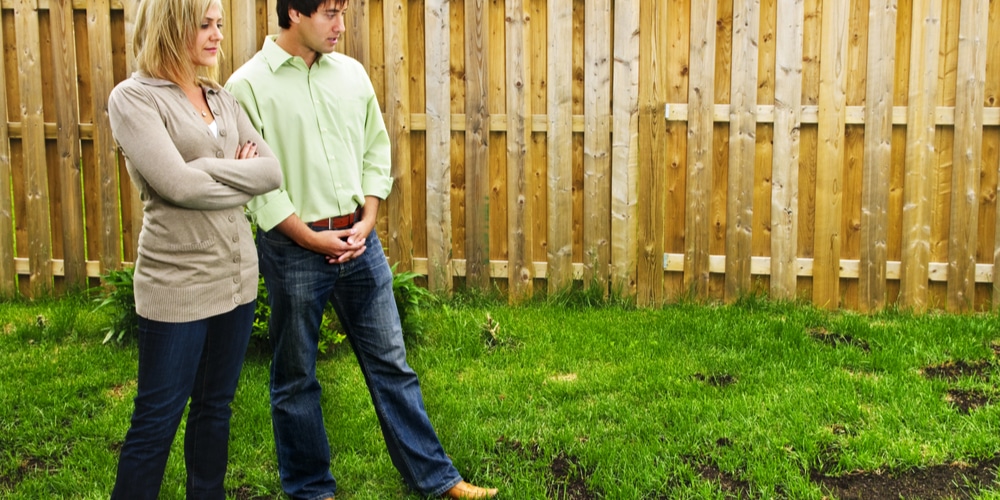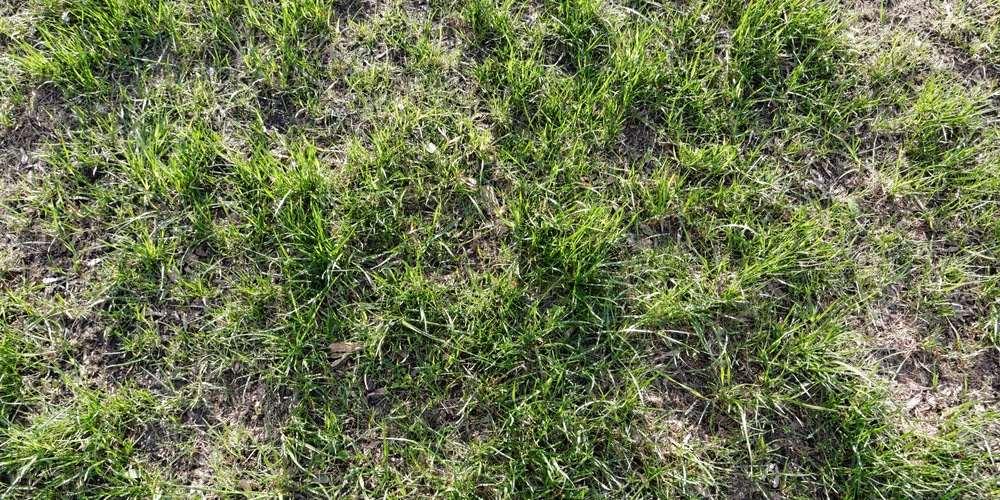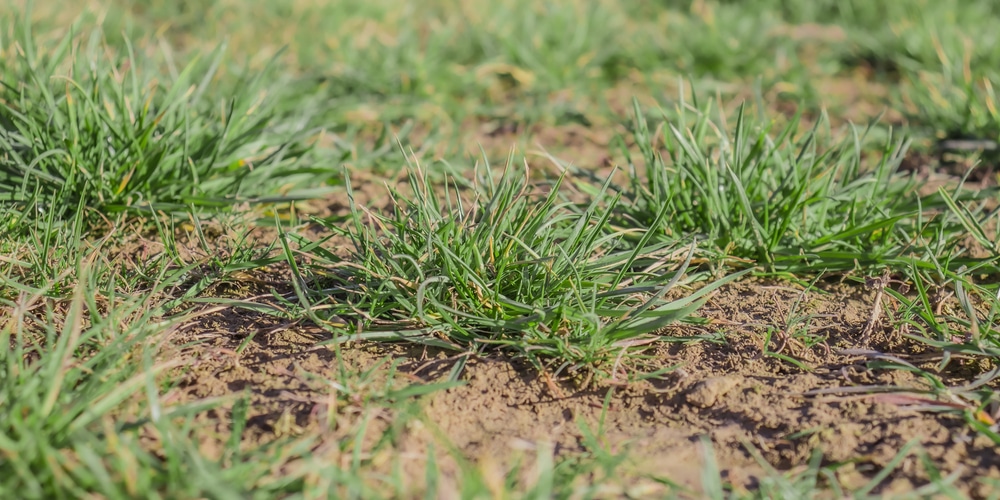Your lawn is a reflection of your hard work. You take the time to mow, fertilize, and water it regularly. So, when you start to notice patches of grass that are growing in clumps, it’s natural to feel frustrated. What could be causing this? Why is my grass growing in clumps?
Read on to learn more about the most common causes of this problem – and how to fix them!
Why Is My Grass Growing in Clumps?
Understanding the underlying reasons why your grass is growing in clumps will help you determine the best course of action.
Compacted Soil
Have you ever noticed how some patches of grass seem to grow in thick tufts while other areas are bare? This problem is usually caused by compacted soil. When the ground is too hard, it prevents roots from spreading out and getting the air and water they need to thrive. As a result, the grass starts to grow in clumps.
Compacted soil is a common problem in areas that see a lot of foot traffic. If you have kids or pets that play in the yard, that could be why your grass is growing in clumps.
The best way to fix this problem is to aerate the soil. This can be done with a garden fork or a special aeration machine. By piercing the soil and creating small holes, you will allow air and water to reach the roots more easily. As a result, the grass will start to grow evenly once again.
Mowing Too Low
As anyone who has ever tried to mow a lawn knows, there is a delicate balance to be struck. Cut the grass too short, and you risk damaging the blades and leaving your lawn vulnerable to disease. Cut it too long, and your lawn will start to look more like a meadow than a well-manicured expanse of green yard.
While it may seem like mowing at a lower setting will save you time, it can actually have the opposite effect. When the grass is cut too short, the roots are exposed to the sun and begin to dry out. The blades also become susceptible to damage from foot traffic and pets. As a result, the grass grows in clumps, giving your lawn an uneven and unkempt appearance.
The best way to fix this problem is to raise the height of your lawnmower. By doing so, you will ensure that the blades of grass are cut at a length that is ideal for healthy growth.
Diseased Grass
Over time, your grass will inevitably become sick. It could be due to a number of reasons- maybe you over-fertilized it, maybe there’s a lack of nutrients in the soil, or maybe insects have taken up residence in the blades. Regardless of the cause, diseased grass will oftentimes grow in clumps.
The blades will turn brown and dry, and the clumps will gradually increase in size. If you notice this happening on your lawn, it’s important to take action quickly. Otherwise, the disease will spread and kill off large patches of grass. The best way to treat diseased grass is to consult with a lawn care professional. They will be able to diagnose the problem and recommend the best course of action.
Lack of Nitrogen in the Soil
Nitrogen is an important element for plant growth, and a deficiency can lead to stunted growth, clumping, and poor color. If your grass is growing in clumps and has a yellowish hue, it’s likely that the soil is lacking in nitrogen. This problem is usually caused by over-fertilizing with phosphorus-heavy fertilizers.
The best way to fix this problem is to add nitrogen-rich compost or manure to the soil. You can also use a fertilizer that is specifically designed to address a nitrogen deficiency. By adding more nitrogen to the soil, you will encourage healthy growth and help your grass achieve a lush, green color.
Soil’s pH Level is Off
If you’ve ever seen grass growing in clumps, you may have chalked it up to bad luck or an imperfect lawnmower. However, there’s usually a more scientific explanation for why grass grows this way. One of the most common reasons is that the soil’s pH level is off. Grass thrives in soil with a pH level between 6.0 and 7.0.
If the soil is too acidic or too alkaline, it can cause the grass to grow in clumps. A soil test can help you determine the pH level of your soil. If it’s outside the ideal range, you can add amendments to raise or lower the pH level.
Insects and Pests
Certain insects, such as chinch bugs, armyworms, and sod webworms, feed on grass leaves, causing the blades to turn brown and die. In addition, these insects can also spread diseases that can damage the roots and kill the grass. As a result, it’s essential to be on the lookout for signs of insect activity, such as brown patches or chewed leaves. If you suspect that your lawn has been attacked by insects, you should contact a pest control professional for advice on eliminating the problem.
Lack of (or Too Much) Water
If your grass is growing in clumps, it could be a sign that you’re not watering it properly. If you’re not giving your lawn enough water, the grass will start to go dormant and turn brown. This can cause the blades to curl up and form clumps. On the other hand, if you’re overwatering your lawn, the roots will rot, and the grass will also form clumps.
Clumpy grass is less able to withstand drought and disease, so it’s important to strike the right balance when watering your lawn. The best way to determine how much water your lawn needs is to check the soil. The soil should be moist but not soggy. If it’s dry, give the lawn a good soaking. Then, recheck the soil in a few hours to see if it has absorbed the water.
Why Is My Grass Growing in Clumps?: Final Thoughts
There’s no need to panic if your grass is growing in clumps. In most cases, the problem can be easily fixed with little effort. By understanding the common causes of clumpy grass and taking steps to address them, you can have a healthy lawn in no time.


